Conversation 33: Imaginary characters that populate the "board of internalized characters" that together constitute the "social self"
Greetings,
This time we will open this conversation with an example of an imaginary character taken from literature and go back to its origins in the second half of the 18th century. The subject of the example is the imaginary character of Werther.
"The Sorrows of Young Werther" is a novel from letters written by Johann Wolfgang von Goethe and which was published in the second half of the 18th century [1774].
The book was published in the fall of 1774 at the Leipzig Book Fair and is one of the representative works of the German "Sturm und Drang" stream.
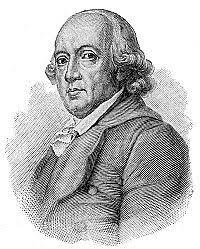
Johann Wolfgang von Goethe (1749 – 1832)
The book consists mainly of letters written by the hero Werther to his friend Wilhelm. At the ball, Werther meets Lotte, the daughter of a clerk who takes care of her eight siblings. Werther knows she is engaged, and yet falls desperately in love with her. and spends time with her often.
But when Albert, Lotte's fiancé, returned, Werther felt the hopelessness of his love for Lotte. Later Lotte marries Albert. And after a meeting in which the emotion overwhelms Lota, she kisses him with feelings of guilt and runs away. Werther sinks into despair, hopelessness and endless mental darkness. He writes a farewell letter and shoots himself to death.
With the publication of the book, according to one version, Werther's character became a role model for many young people who probably internalized his character and identified with it and perhaps for some of them he became the dominant character in the "board of internalized characters" that build their "social self". There was even a clothing fashion inspired by the character of yellow vest pants and a blue jacket and even other products mentioned in the book. Some talk about it as mass hysteria or the "Werther phenomenon". And there are reports that a wave of suicides or at least a number of suicides was observed following the book, a phenomenon called the "Werther effect".
A second imaginary character that we will mention from the literature is that of the prince. This is the main character in a book written by Niccolò Machiavelli, a diplomat and philosopher (1469-1527) at the court of Lorenzo de' Medici. The book was written when he was no longer in an active position with Lorenzo de' Medici. The book mentions a series of rules according to which the prince can take in order to successfully control various situations and neutralize his enemies sometimes in ways that today would be considered cunning and even cruel. There are certain reports that Catherine de Medici, Cardinal Richelieu, Napoleon Bonaparte who even praised the book and its proposals, Otto von Bismarck, John Adams, Joseph Stalin, Henry Kissinger, and others tended to adopt his image.
This is difficult to prove since his character is controversial and people don't tend to admit that it affects them, but it seems that at least some of these politicians and others adopted his character and sometimes even internalized it as a dominant figure in the "Directorate of Internalized Characters".
The Prince by Niccolò Machiavelli
It is of course possible to find several more examples, although not too many, of imaginary characters in literature that were internalized by humans and became influential figures in their "directory of internalized characters".
After these examples, we will first ask how to define an imaginary character that is internalized into the "directory of internalized characters".
In connection with this, we will first note that the imaginary character has no realistic representation in external reality, it has no origin in reality.
Secondly, we note that there are imaginary characters taken from literature, myth, legend, poetry, painting, and sculpture, and there are imaginary characters that are created anew, that is, from the beginning, without any clear source outside of the creator of this character.
Thirdly, we note that in any internalized character that has an external representation in reality, there may be lines from someone that has been added to the character. For example, a person who internalized the image of his mother and added characteristics to it or exaggerates by internalizing features that are not realistic about the mother. But according to our definition this is not an imaginary character but a realistic character that has been internalized.
The creation of imaginary characters can be understood in a number of ways, below we mention two of them:
1] Alter Ego: Throughout history, many people have created an alter ego, which can be seen as a kind of imaginary character. These alter egos can influence behavior, provide a means of expression or act as a coping mechanism. Famous figures, especially in the arts, often used alter egos in their work.
2] Psychological Interpretation: From a psychological point of view, the act of creating the inner character can be seen as a way to isolate or externalize aspects of yourself. It can be a therapeutic tool or a coping mechanism. However, there is also a risk: if a person loses touch with reality or becomes too dependent on their inner image, this can lead to mental problems.
The internalized imaginary character may have an effect on the person's behavior, so an internalized imaginary character can definitely influence behavior. Just as an internalized parental voice or superego can guide or judge one's actions, an imaginary character can provide feedback, encourage specific actions, or discourage others.
However, the creation of the imaginary character may also have potential risks when there is a lot of reliance on an internal imaginary character, especially without external feedback, it can be isolated and potentially destabilizing. It is essential to maintain balance and ensure that the person is anchored in reality.
Finally, we note that an imaginary figure may have a role in psychological therapy: thus some therapeutic techniques include creating or interacting with internal figures. For example, internal family systems therapy assumes that the mind is made up of multiple "parts" or subpersonalities, each with its own perspective, interests, memories, and perspective. Dealing with these parts can help people heal and integrate traumatic experiences.
Below we will give several examples of internalized imaginary characters.
The first example is that of the imaginary friend. It is a fictional character created by young children. Such imaginary friends can sometimes accompany the child for several years. According to research, it seems that about half or more of the children have an imaginary friend, usually a human but also an animal and sometimes an object. The imaginary friend can fulfill the mental needs of the child and give him security. In adults, the phenomenon is not common and sometimes appears in those who have suffered sexual exploitation or abuse or extreme loneliness. Here the friend is a savior or savior from situations that are difficult for a person to deal with and sometimes the imaginary friend can even appear as a couple or even a replacement family.
It is interesting that the song "Friends of Tintin", presented below by Miriam Yelan Shtaklis, deals with the imaginary friend of the boy Danny (our translation)
Tintin's friends
I have a friend, and his name is Tintin,
And he is small, small, small,
And it is very, very small.
And he is mine, and he is – my secret.
But he sleeps in my bed,
and he eats from my plate,
And he is always, always with me –
my friend Tintin, Tintin.
And no one has seen him yet,
And no one has heard him yet –
neither mother nor father
Neither grandmother nor grandfather.
But he sleeps in my bed…
And then everything annoys me,
And then they all accept me,
Oh, Danny-Danny-Dan!
And they don't know that it's Tintin –
my friend Tintin.
But he sleeps in my bed…
The second example is that of Fernando Antonio Nogueira Pessoa (1888 – 1935) [the material here is taken from Wikipedia and from the book translated into Hebrew by José Paulo Qualcetti: Fernando Pessoa, a sort of autobiography, Ramonim Publishing House] Portuguese poet, writer, translator and philosopher, one The most important literary figures in the 20th century and one of the greatest poets in the Portuguese language who also wrote and translated from English and French. Pessoa was known for his complex and multi-layered literary works. When Pessoa died in 1935, he left behind many of his writings that were written as they were by many different writers – theronyms, as he called them, with completely different personalities and different views, often even radically contradictory, they dealt with poetry, style, nature, politics and antiquities.
They were all the works of the man named Fernando Pessoa, from the variety of dozens of heteronyms it is difficult to say who Pessoa himself is. Pessoa himself explained: "A work under a pseudonym is, with the exception of the name with which it is signed, the work of the writer who writes as himself. In contrast, a hetronimic work is of the writer writing outside of his own personality: Pessoa therefore made use of heteronyms, imaginary characters that can be perceived as alter egos each with a literary style of his own with his own unique personalities and writing styles, he created about seventy-five imaginary writers and poets, of which three stand out, Alberto Cairo, Alvaro de Campos and Ricardo Reyes. He did not call them pseudonyms because he felt it did not reflect their true independent intellectual lives and instead These fictional characters sometimes held unpopular or extreme views.
One type of theronyms created by Pessoa is called "mentones", which is a term he coined to describe a type of theronyms based on a particular mental state or personality trait. Pessoa therefore built a rich variety of imaginary characters in his "Directory of Internalized Characters".
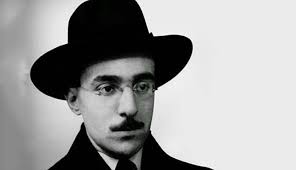
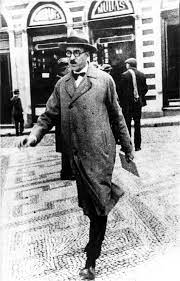
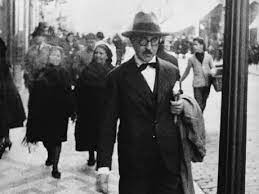
Fernando Pessoa (1888 – 1935)
Fernando Pessoa is also known as someone who suffered from various mental problems during his life. He had a complex personality and was known for his introverted and melancholic nature.
..
There is also evidence to suggest that Pesua may have experienced dissociative states or altered states of consciousness. In his writing, as mentioned above, he often referred to himself as different characters or personas, each with their own unique style and voice. In addition, according to reports, Pessoa also practiced automatic writing, a technique in which a person writes without conscious thought, allowing the subconscious to express itself. This practice can sometimes lead to dissociative or trance-like states.
In general, while it is difficult to say with certainty whether Pessoa experienced dissociative states or not, there are certainly aspects of his life and work that indicate his entry into altered states of consciousness and a willingness to explore the limits of his self.
Another relatively simple explanation for Pessoa's complicated world and his heteronyms claims that this author is simply immature and remains in the state of the child inventing imaginary friends. Pessoa himself expressed himself: ""I remember what I believe were my first Hetrons, or rather, my first non-existent acquaintance—Chevalier de Paz—through whom I wrote letters to myself when I was six years old, and towards whose not entirely obscure figure I still have feelings bordering on nostalgia. I have a less vivid memory of another character. . . who was a kind of rival to Chevalier de Paz… Such things happen to all children without a doubt.
But I lived them so intensely that I still live them; Their memory is so strong that I have to remind myself that they weren't real…this tendency to create another world around me…started with me as a young adult, when a witty remark that was not completely in line with who I was or thought I was would occur to me sometimes and for some unknown reason…, I would Immediately, spontaneously, I say it as if it came from some friend of mine whose name I would make up, along with biographical details, and a description of a character – physiognomy, height, clothing and gestures – and see it immediately in front of me".
A third example is that of the hypnotist Milton Erickson. This is a case where he treated a patient with a very significant inner feeling of deprivation who lacked support and comfort from her childhood.

Milton Erickson and a patient (1901-1980)
During the therapeutic hypnotic sessions, Erickson went back with her through hypnotic regression to the years of her childhood and adolescence. While he himself serves as a supportive and comforting figure and visits her every February during her teenage years. And so, in fact, in several therapy sessions, he built an internalized supporting figure in her who accompanies her in her teenage years and gives her an answer to the deprivation she suffered from. And actually created a significant character in her character board. This is an example of building an imaginary internal character in the sense that it was not in reality during her life but on the other hand it is realistic in that it is built on Erikson's own character.
In the therapeutic context, we will also mention the method of Carl Simonton (1942-2009) who uses guided imagery in cancer patients. With this method, the cancer patient bombards the tumor with bullets, recruits white cells to fight it, or recruits any other means and uses an imaginary friend for his help.

Carl Simonton (1942) – 2009)
A fourth and more interesting example is that of the Tulpa [TULPA]. Here a person can create an internal imaginary figure, also known as a "tulpa" or "thought form", which can influence their behavior. This concept spans different cultures and traditions, and while the exact nature and implications may vary, the basic idea remains: through a concentrated and sustained focus of thought, one can develop an autonomous entity within one's consciousness.
The roots of the term "tulpa" lie in Tibetan Buddhism. The concept refers to a being or an object created through spiritual or mental forces. Historically, it has been understood that advanced spiritual practitioners can manifest physical entities through their thoughts.
By the way, in recent times, some internet communities have appropriated the term "Tulpa" and engaged in the practice of "Modern Tulpamancy". These communities believe in the creation of living and autonomous entities within the human mind. These tulpa are believed to have feelings, desires and thoughts of their own, distinct from those of the host.
The theosophist Annie Besant, in her 1905 book "Thought Forms", divided the tulpa into three types: forms in the form of the person who created them, forms that resemble objects or people and may be transformed into a soul by the forces of nature or by the dead, and forms that represent inherent qualities from the astral or mental plane, such as emotions.

Theosophist Annie Besant [1847-1933]
Spiritualist Alexandra David-Neill stated that she observed Buddhist tulpa-making practices in 20th-century Tibet. She described the tulpa as "magical formations created by a powerful concentration of thought." David-Neill believed that a tulpa could develop a consciousness of its own: "Once the tulpa is endowed with sufficient vitality to be able to play the role of a real being, it tends to break free from the control of its creator. According to David-Nill, this happens almost mechanically, just as the child, when its body is intact and capable to live separately, leaving his mother's womb (David-Neel, A. (1931). Magic and mystery in Tibet. Penguin Books Limited. )

Spiritualist Alexandra David-Neill
Influenced by depictions in television and film from the 1990s and 2000s, the term tulpa came to be used to refer to a type of willing imaginary friend. Practitioners consider the tulpa to have consciousness and relative autonomy. Online communities dedicated to tulpa have sprung up and refer to tulpa practitioners as "tulpamancers".
Surveys by Veissière Samuel examined the demographic, social and psychological profile of this community. These practitioners believe that Tulpa is "a real person or something real". The number of active participants in these online communities was in the low hundreds, and only a few face-to-face meetings took place. They belong primarily to an urban, middle-class, Euro-American demographic of teenagers and young adults. And they "cite loneliness and social anxiety as an incentive to adopt the method.
93.7% of the respondents stated that their involvement in creating tulfat "improved their condition", and led to new unusual sensory experiences. Some practitioners have sexual and romantic interactions with their tulpa, although the practice is controversial and tends toward taboo. One survey found that 8.5% support a metaphysical explanation of tollfots, 76.5% support a neurological or psychological explanation, and 14% "other" explanations.
Practitioners believe that telepaths are able to communicate with their host in ways they feel do not arise from their own thoughts. Some practitioners report experiencing hallucinations of their tulpa. Practitioners who have hallucinations report being able to see, hear and touch their tulpa.
Veissière's survey among 141 respondents found that the rates of autism, and attention and hyperactivity disorders were significantly higher among the Tollfmansers surveyed than in the general population. He goes on to speculate that people may be more willing to do tulpa because these groups have a higher level of solitude.

Samuel Veissière: deals with anthropology and cognitive sciences
See:
Veissière, S. (2015, April 3). Varieties of tulpa experiences: Sentient imaginary friends, embodied joint attention, and hypnotic sociality in a wired world. [Web log post]. Retrieved from http://somatosphere.net/2015/varieties-of-tulpa-experiences-sentient- imaginary-friends-embodied-joint-attention-and-hypnotic-sociality-in-a-wired- world.html/
Veissière, S. (2016). Varieties of Tulpa experiences: The hypnotic nature of human sociality, personhood, and interphenomenality. Hypnosis and Meditation: Towards an Integrative Science of Conscious Planes, 55-78.
Finally, we will add several comments and clarifications:
First, there may be a situation where sometimes an imaginary character will become a predecessor dictator in the board of internalized characters and will dictate the person's behavior and attitudes. In extreme cases, in severe mental disorders such as paranoid schizophrenia, there may even be an imaginary figure [or several figures] of a persecutor who dictates the moves of the sick person and serves as a predecessor dictator [see previous conversations to understand the concepts].
Second, even in milder disorders, an imaginary figure may appear. For example, the concept of a phobic friend is well known. Here, in order to deal with the phobia, which is a definite fear of something, an imaginary friend appears or is created to help the person who is afraid of heights or closed places, etc. and gives him comfort.
Thirdly, there is usually less change evident in an imaginary character over time since there is no internalization of a real character and there is a constant dialogue between it and its internalized character, which contributes to changes. It also seems that usually [not always] the imaginary character is less rich and more consistent than a realistic character that has been internalized.
Fourth, it seems that the relationship between internalized imaginary characters and internalized realistic real characters is important to the extent that the attitude tends to be in favor of the imaginary internalized characters, there may be a disconnection from reality and the appearance of pathology. Again, this is not always true, but such a trend is evident.
Fifth, an imaginary character requires a pronounced attachment as a precondition. Hence the question arises, is an imaginary character possible in situations where the attachment is extremely poor such as autism? Thus, one study demonstrates that only about 16 percent of autistic children report an imaginary friend compared to 45 percent of children in the general population.
Sixth, is it possible that an imaginary figure will be used as a transitional object for the child [transitional object is a term that refers to a real object that symbolizes the mother for the baby and allows him to maintain contact with her in the imagination]?
Seventh, is it possible that the creation of an imaginary character from a combination of elements, some in the creator's environment, some from his imagination, some from the culture and its derivatives, teaches something about the internalization mechanism?
Eighth, did scientists who felt alone in their discoveries like Gordano Bruno for example build an imaginary group of people and scientists of the future? One of us [J.L.] spoke with a number of well-known scientists whose discoveries were not appreciated in their opinion and who reported that they believe that in the future groups of scientists who exist in their imagination will appreciate their work and that they are currently "ahead of their time" according to them.
That's it for now!
See you in the next conversation,
Dr. Igor Salganik Prof. Joseph Levine
 Prof. Joseph Levine, M.D. is an emeritus associate professor in the Division of Psychiatry, Faculty of Health Sciences, Ben Gurion University in Israel. Prof. Levine is a certified psychiatrist with clinical experience in controlled trials of adult psychiatric disorders and in psychotherapy. He was awarded a NRSAD independent investigator grant for the study of Creatine Monohydrate in psychiatric disorders -- mainly Schizophrenia. He resides and treats patients in Tel Aviv and all of central Israel.
Prof. Joseph Levine, M.D. is an emeritus associate professor in the Division of Psychiatry, Faculty of Health Sciences, Ben Gurion University in Israel. Prof. Levine is a certified psychiatrist with clinical experience in controlled trials of adult psychiatric disorders and in psychotherapy. He was awarded a NRSAD independent investigator grant for the study of Creatine Monohydrate in psychiatric disorders -- mainly Schizophrenia. He resides and treats patients in Tel Aviv and all of central Israel.
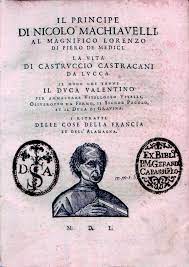
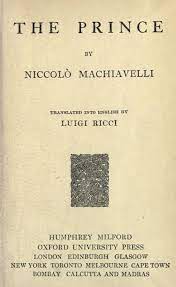
Leave a comment